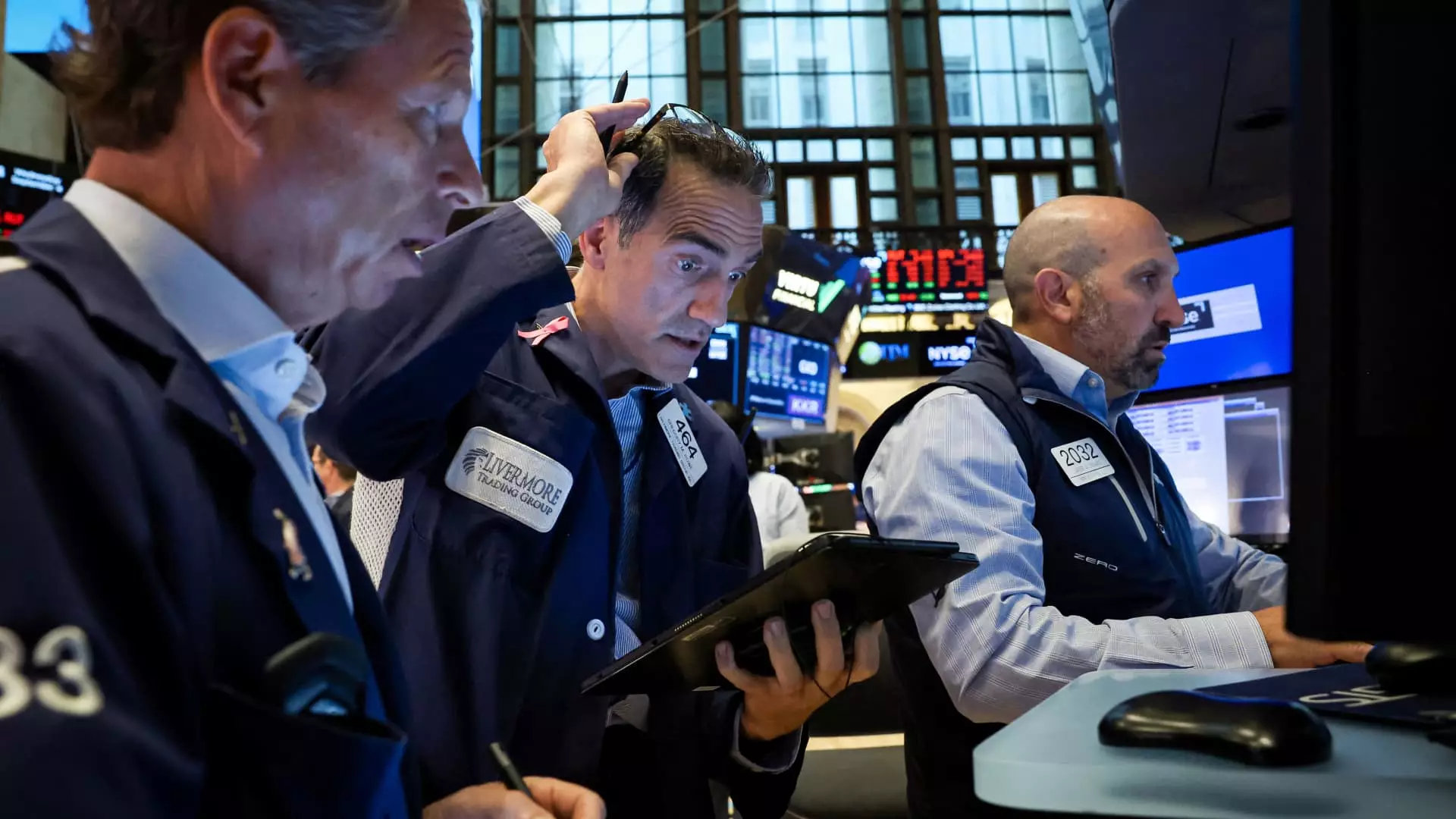The stock market is an intricate beast, often showcasing erratic behavior in response to a myriad of external stimuli. This was particularly evident in the period following the Club’s August Monthly Meeting, where multiple indices displayed contrasting but notable trends. The S&P 500 showed a modest increase of 1.8%, while the Dow Jones Industrial Average and the Nasdaq Composite enjoyed slightly larger gains of 2.1% and 0.9%, respectively. This raises a crucial question: What underlies these fluctuations, and how can investors navigate the shifting landscape?
As market participants are well aware, the trajectory of stock valuations doesn’t simply ascend; it’s often marred by investor sentiment influenced by economic data and corporate performances. The advent and potential sustainability of the generative artificial intelligence boom have thrown a wrench in previous bullish attitudes. Many investors are grappling with anxieties surrounding the durability of this technological wave, resulting in a market that appears volatile and sensitive to Federal Reserve signals regarding monetary policy.
A particularly revealing moment occurred on the last Friday of August, marking one of the S&P 500’s worst weeks since March 2023. This downturn followed a disappointing jobs report for August, further stressed by a significant drop in Nvidia’s stock. Nevertheless, Nvidia has rebounded sharply in subsequent weeks, indicating the market’s capacity for recovery even after sharp declines.
Hitting September, the S&P 500 faced fresh headwinds, expressing discontent after a previously successful four-month period of gains. During this turbulent stretch, the Club strategically adjusted its investment portfolio, decreasing exposure to certain stocks while investing in promising sectors like clean energy and artificial intelligence. Such tactical maneuvers reflect the broader trend of investors gravitating toward more resilient and defensive investments, anticipating economic challenges ahead.
In an era of uncertainty, a shift toward well-capitalized firms capable of weathering potential recessions has emerged. Defensive stocks, particularly those belonging to Abbott Laboratories and TJX Companies, demonstrated relative robustness in performance, highlighting a growing pattern among investors prioritizing stability. Abbott Laboratories, for instance, has capitalized on a favorable market shift towards healthcare investments. Its recent introduction of an innovative over-the-counter continuous glucose monitor, Lingo, propelled its stock higher, drawing interest amid increasing demand for healthcare technology.
Conversely, TJX Companies’ successful earnings announcements and optimistic profit outlook has placed its stock on the rebound, garnering attention from investors seeking recession-resistant opportunities. As retail sentiment continues to oscillate based on consumer behavior, TJX’s positioning as a bargain retailer aligns well with current trends emphasizing consumer frugality.
A closer examination of specific stocks reveals a nuanced performance landscape. For instance, Best Buy’s stock surged by an impressive 17.7% following favorable policy cues from Federal Reserve Chair Jerome Powell. The intrinsic relationship between interest rate adjustments and consumer activity, particularly in housing, underlines the potential for increased demand for consumer electronics. Investors reacted savvy to mitigate risks before the anticipated earnings report, which ultimately exceeded expectations, further solidifying Best Buy’s position for sustained growth.
Amazon’s journey reveals a different narrative, as the e-commerce titan rallied on the backs of analyst upgrades and strategic positioning in essential goods. The stock’s recovery is characterized by optimistic projections from industry analysts, attesting to Amazon’s readiness to adapt to changing consumer preferences. By leveraging its extensive logistics infrastructure and broadening its range of products, Amazon is poised to gain significant market share despite economic uncertainties.
Advanced Micro Devices (AMD) experienced a notable surge, reflecting an extensive pivot toward technology-focused investments as the demand for semiconductors continues to recover. Positive updates regarding AI demand and corporate partnerships, such as the collaboration with Oracle, have reinvigorated investor interest, illustrating a strong rebound from previous lows. Such recovery is emblematic of broader trends where market confidence can shift rapidly based on emerging opportunities within high-tech sectors.
Recent market activities illustrate the importance of remaining agile in a volatile economic climate. Strategic portfolio adjustments alongside a vigilant monitoring of emerging trends can yield dividends for investors willing to adapt their strategies in real time. The current landscape demands not just a keen understanding of market movements, but also an anticipatory approach that values both resilience and adaptability. In the face of uncertainty, aligning with stable, high-performance stocks while avoiding overexposed sectors may very well be the path toward sustained investment success.

